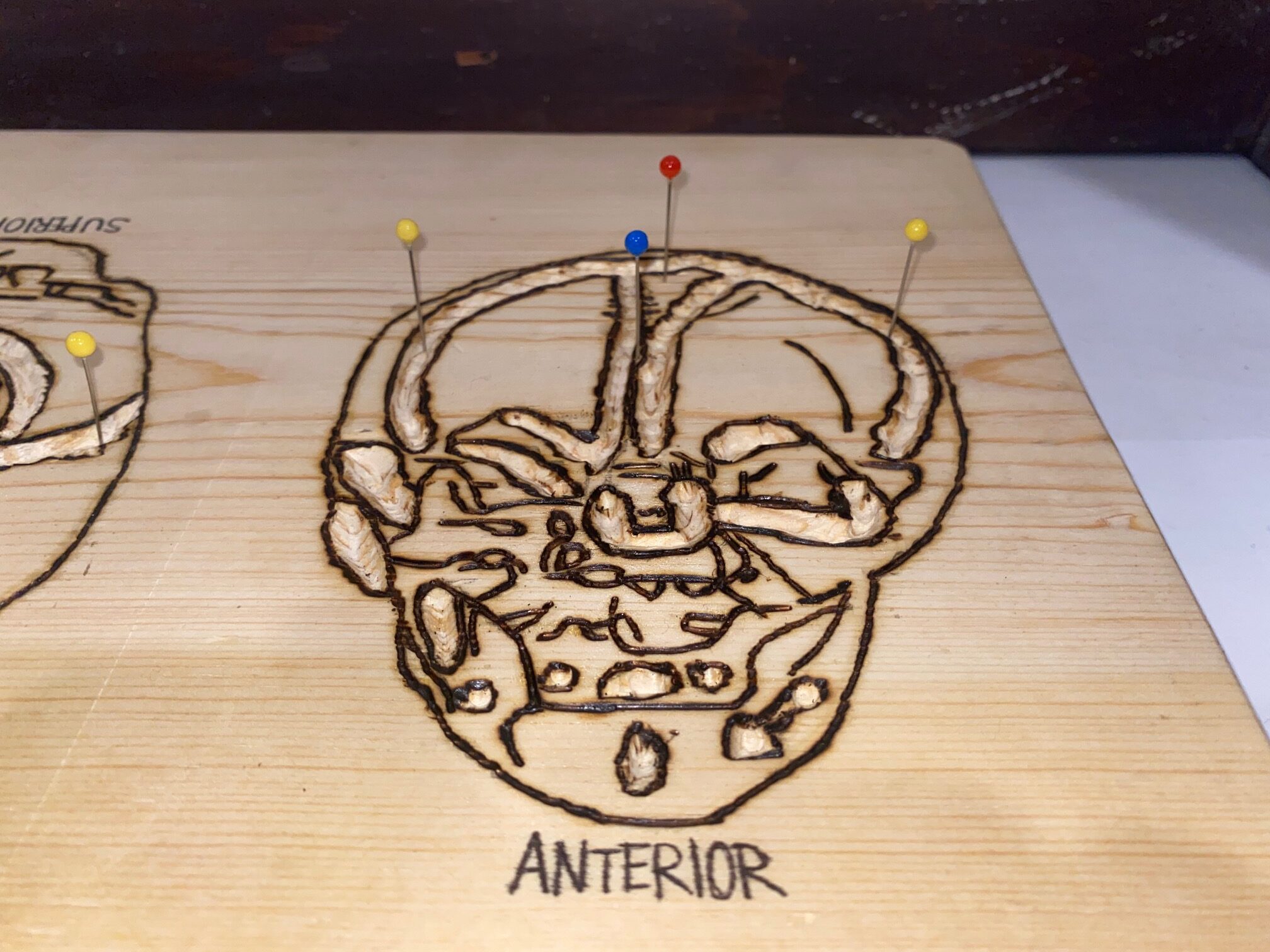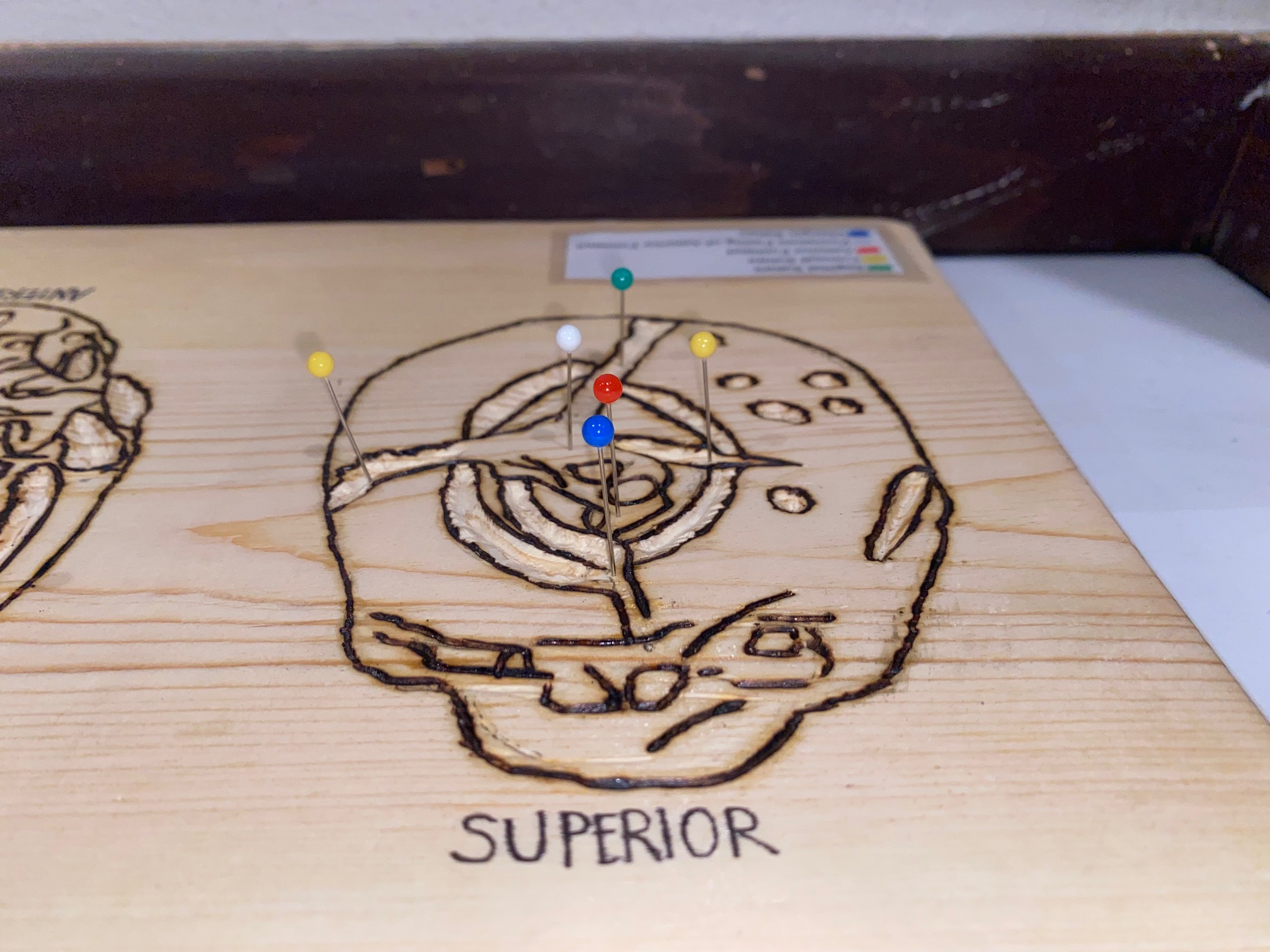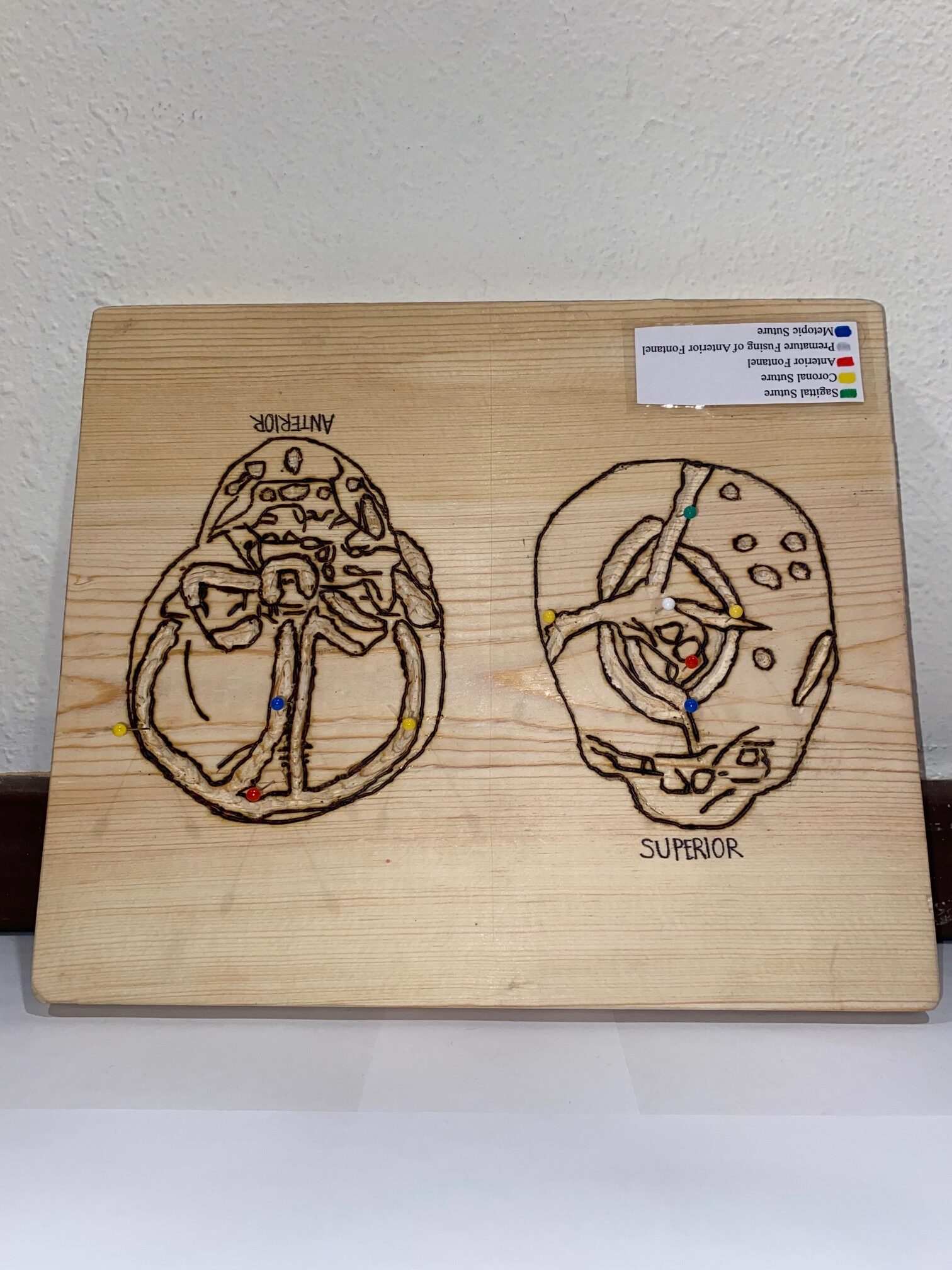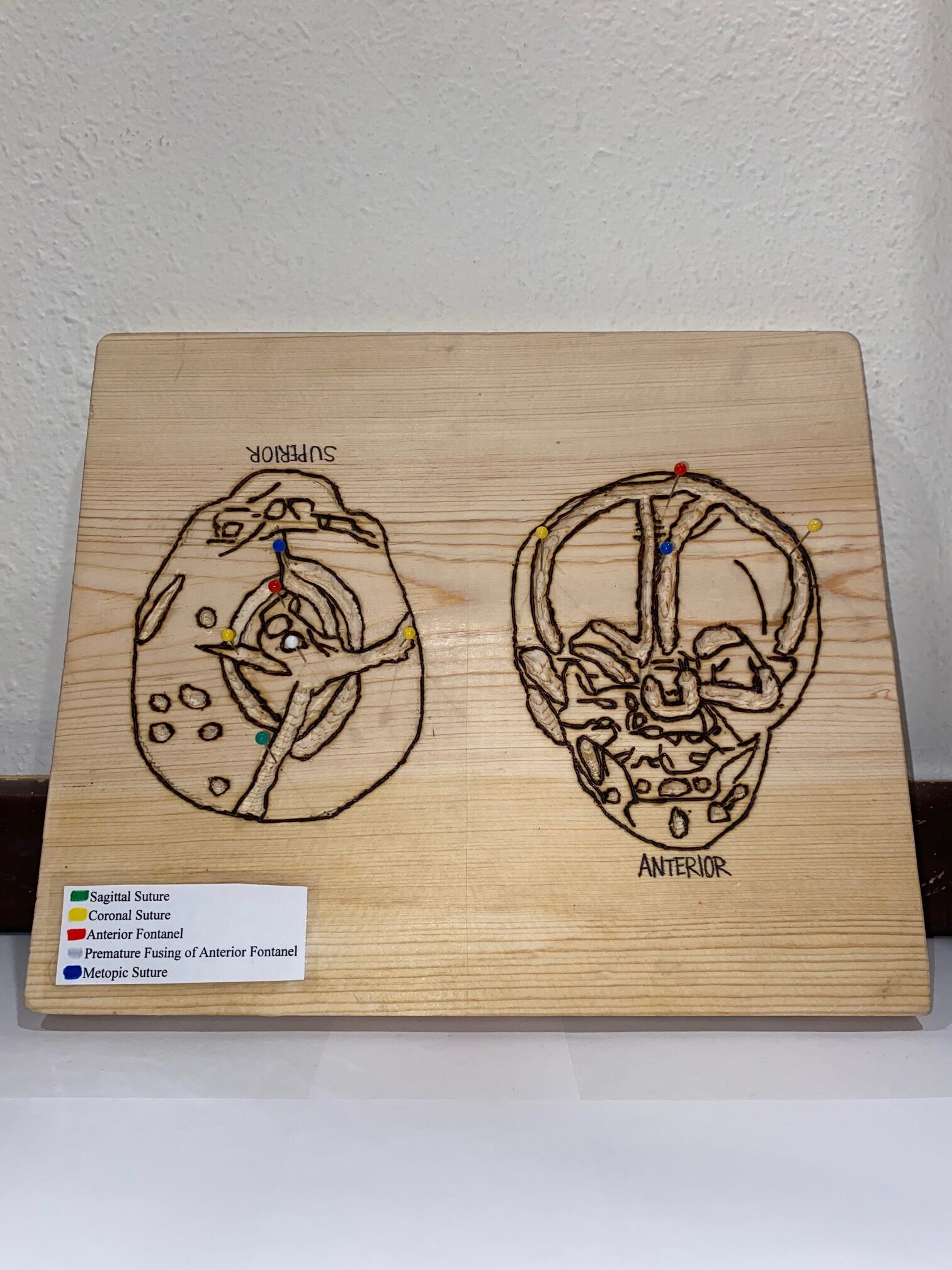For my STEAM project, I chose to wood-burn and engrave a skull with craniosynostosis. Craniosynostosis is when one or more of the cranial sutures close/fuse prematurely. I have also used colored pins and a color key to label the visible sutures and fontanelle.





Lily Trudgen has a piece of wood-burn art, showcasing a disease of the skull most often diagnosed within the first year of life called Craniosynostosis. Lily was inspired by the learning objectives from our Skeletal System Unit: Explain how bone development is hormonally regulated, Know the stages of bone development and repair, Know the parts of the bone and their shapes.
Craniosynostosis is a disease that can be described as the opposite of osteoporosis, which causes osteoblasts to function slower, as it has osteoblasts function much faster. This speedy production and activation of osteoblasts causes the skull to prematurely fuse together, which is depicted as deep grooves in the wood labeled with color-coded pins. The sutures shown in the wood project are the Sagittal (green), Coronal (yellow), and Metopic (blue) sutures. Additionally, Lily has depicted the Anterior Fontanel (red), and the premature fusing of the Anterior Fontanel (white).
In her essay, Lily describes the negative consequences and the three main separate causes of Craniosynostosis. The brain continuing to grow and develop while the skull is fused leaves no room for the future development of the brain, causing deformities in the skull itself. The first cause was the overactivation of osteoblasts in fetal development going into early childhood. The second cause of Craniosynostosis is flaws when forming the boundaries of the skull, growing abnormally instead of remaining semi-movable. The third cause of Craniosynostosis is a decrease in suture stem cell population, decreasing regulations, causing the formation of the skull to go haywire. The last possible reason for Craniosynostosis was tacked on to the end of Lily’s essay, describing how in the womb, a fetus exposed to excess thyroid hormone can cause the early fusion of sutures.